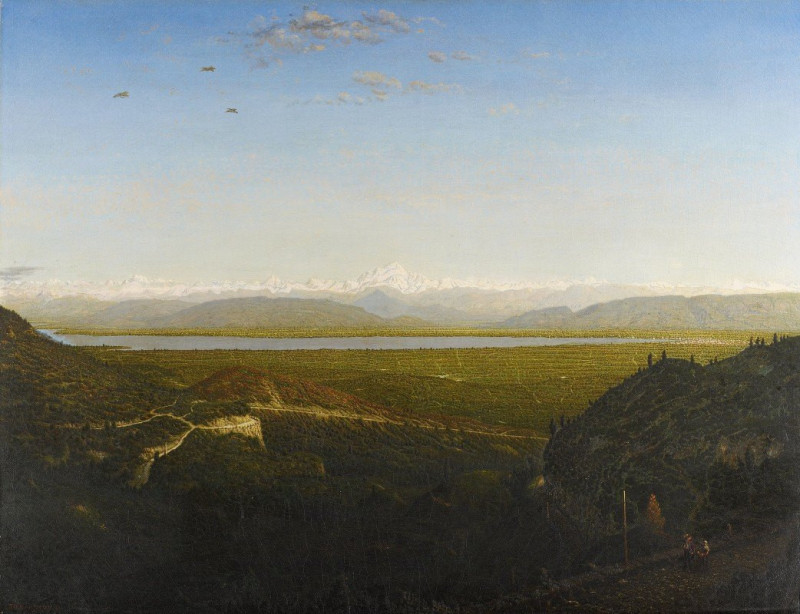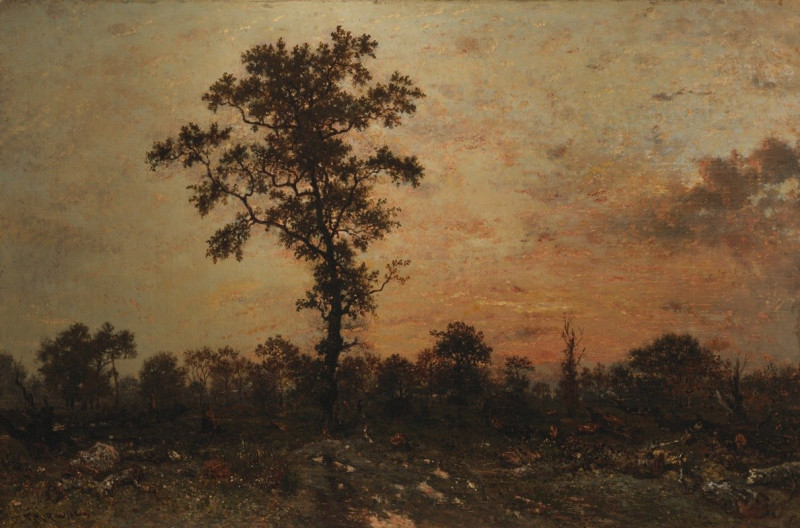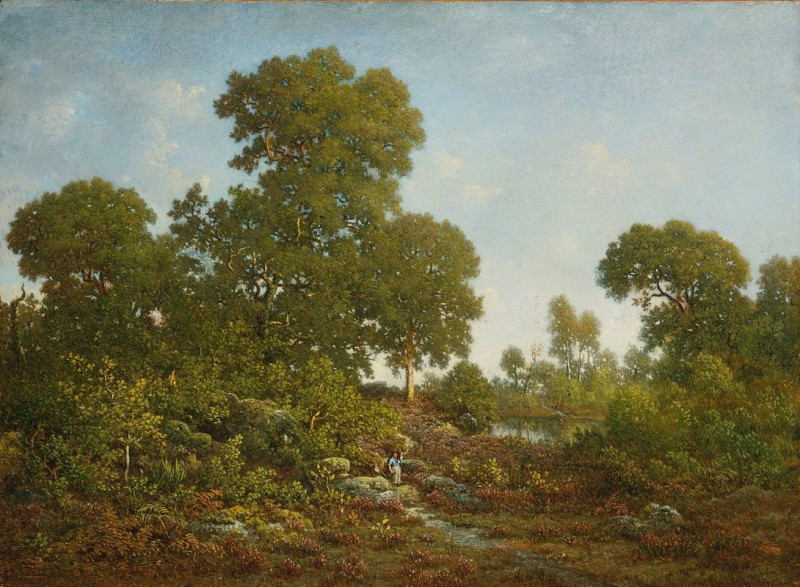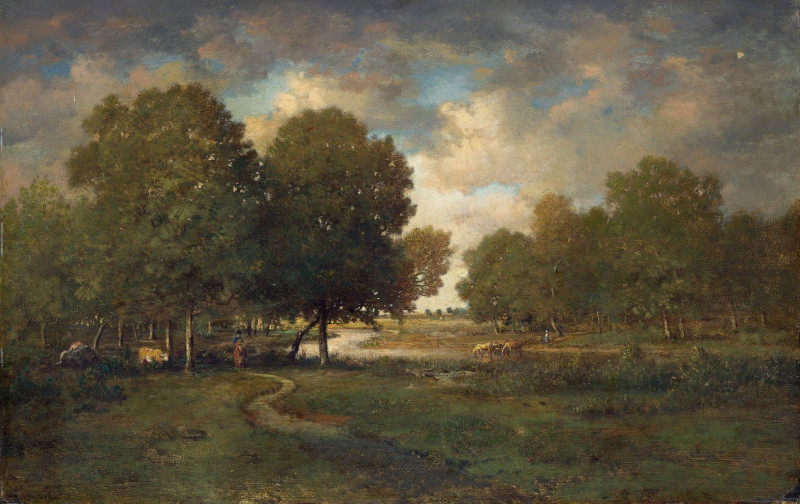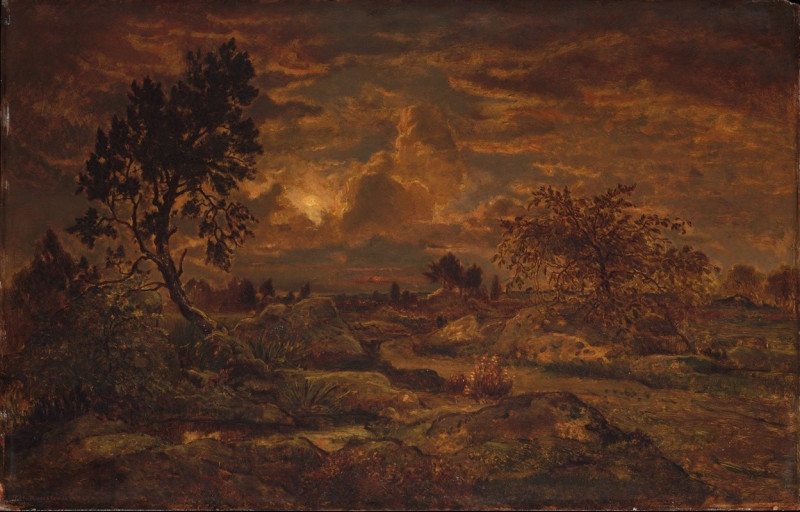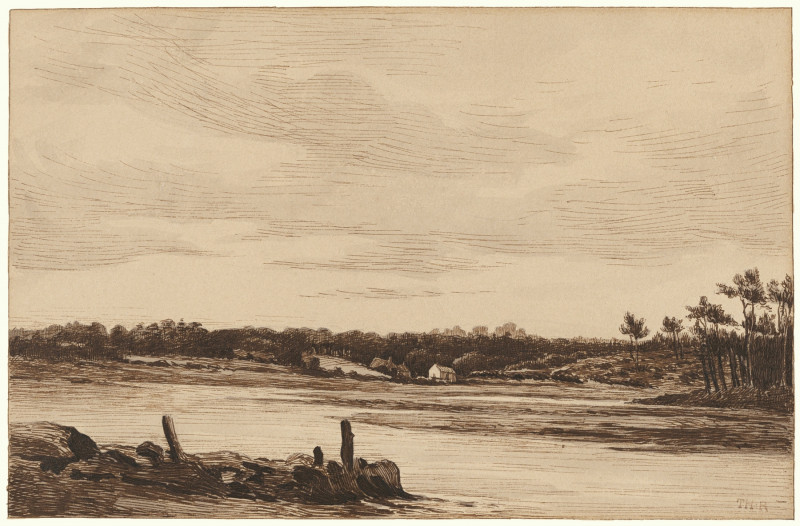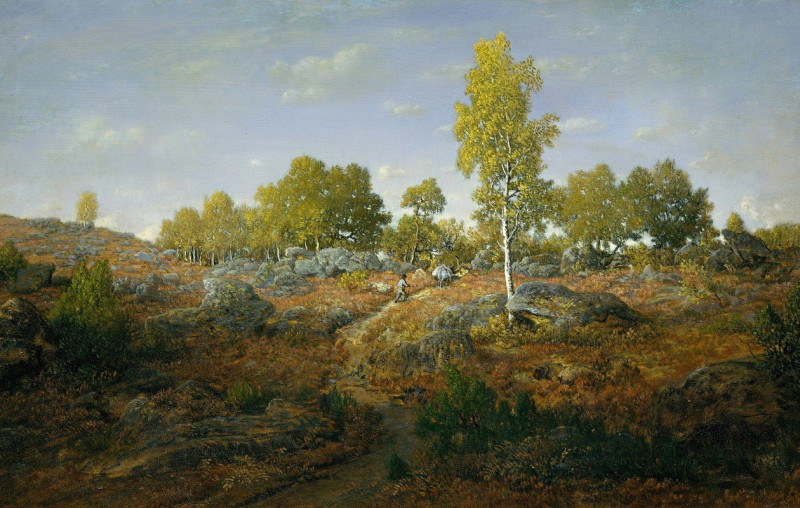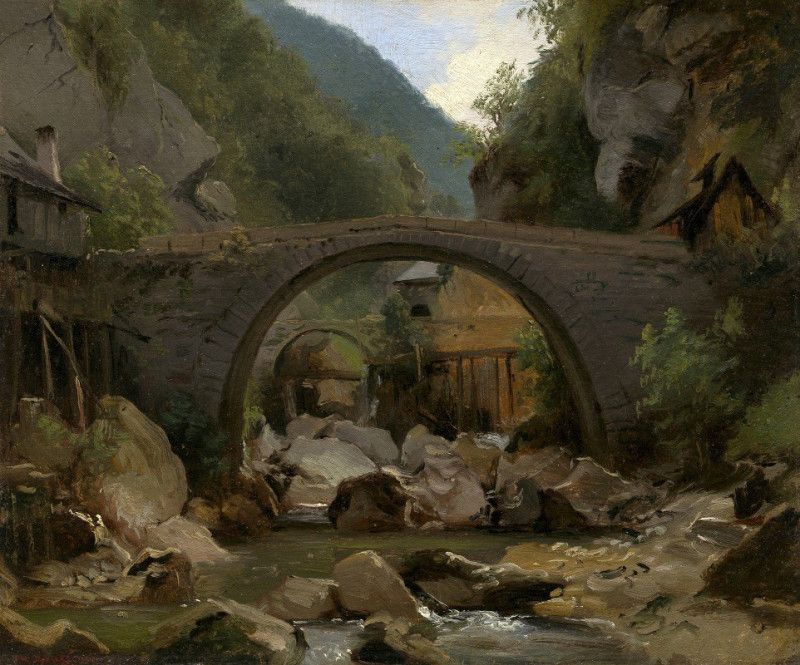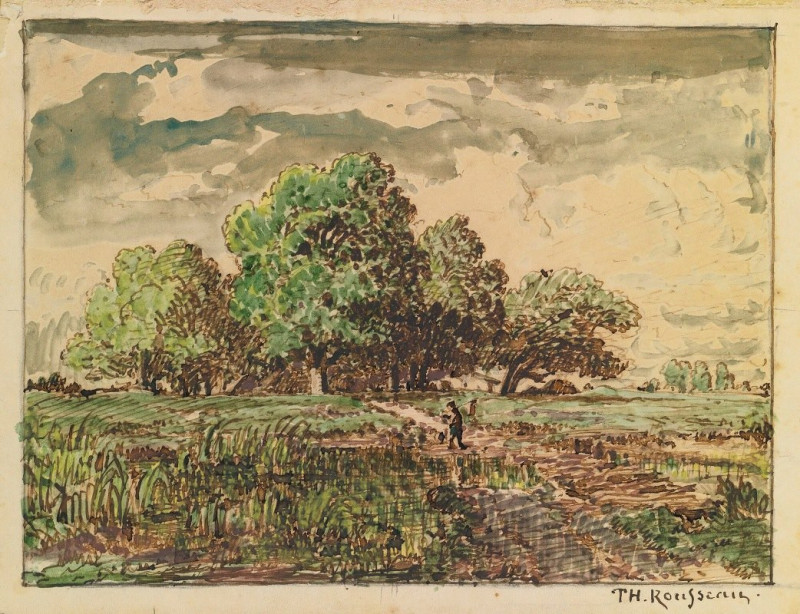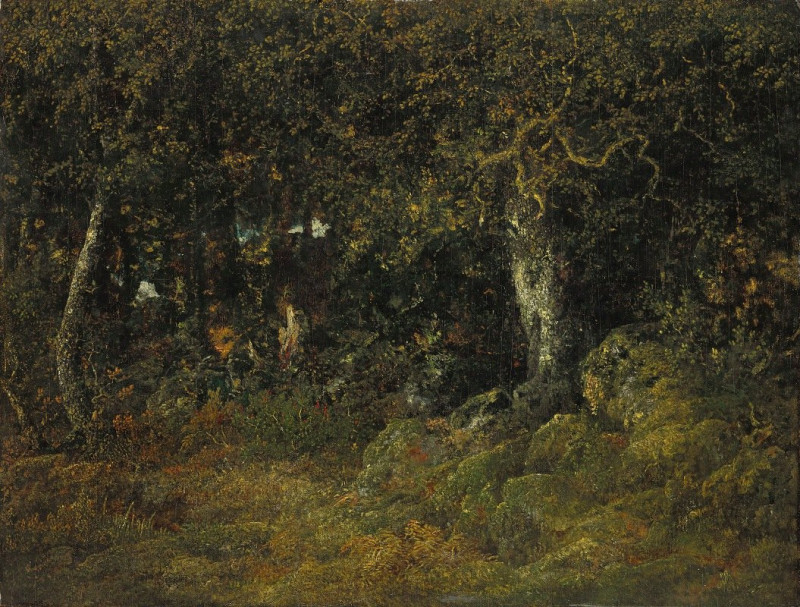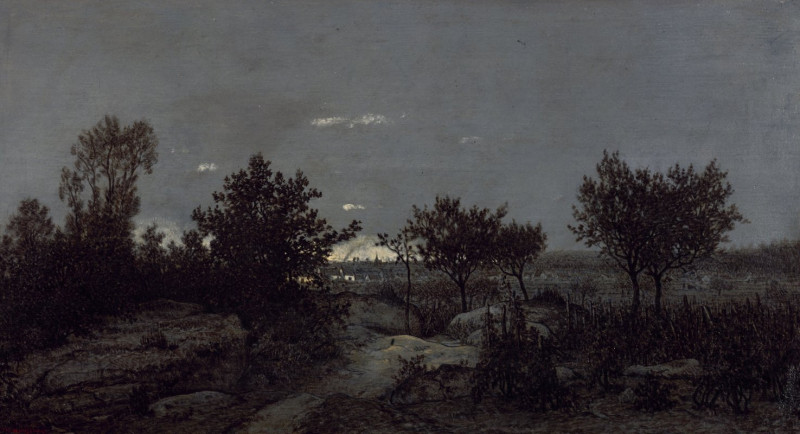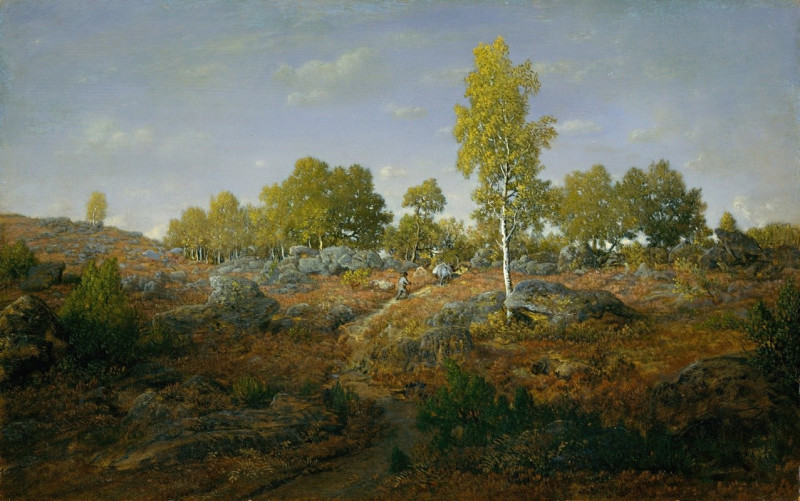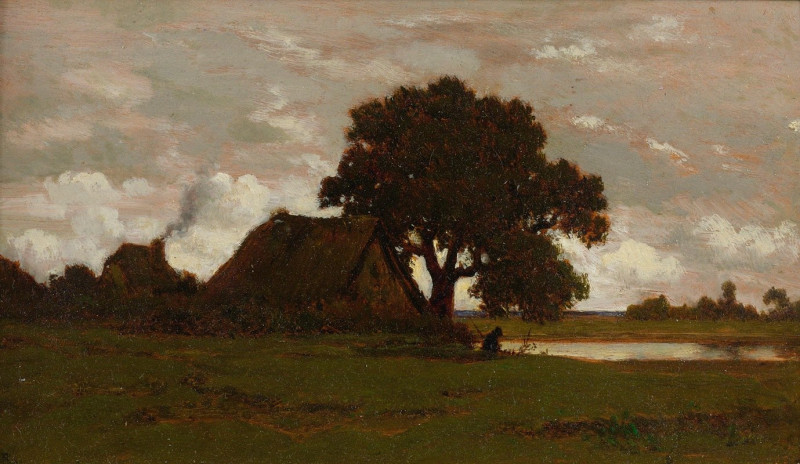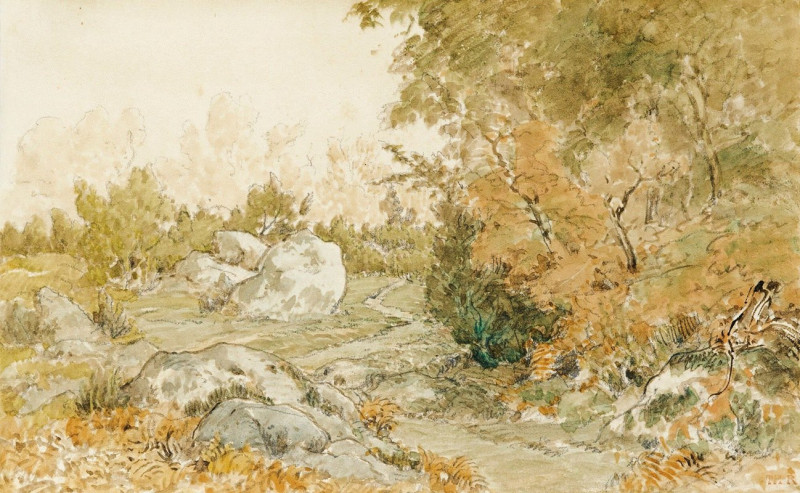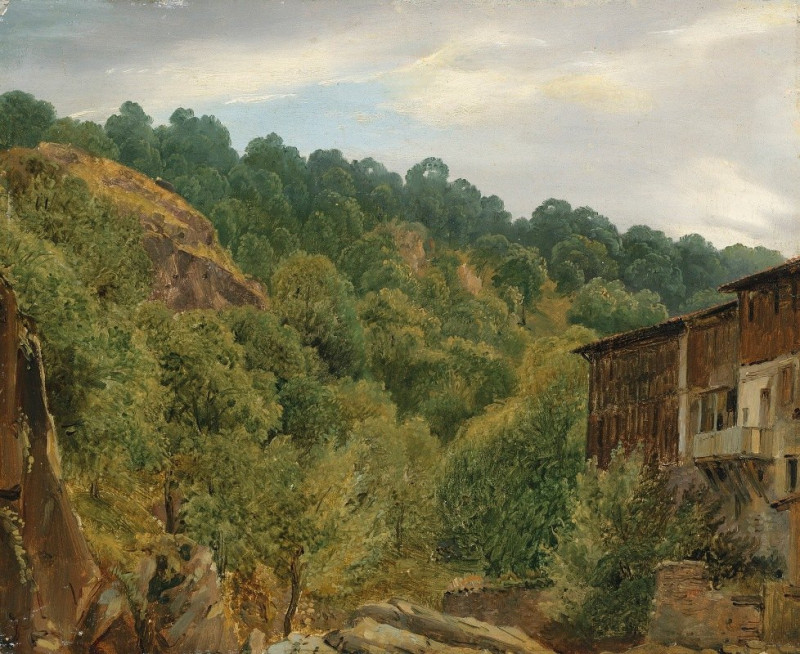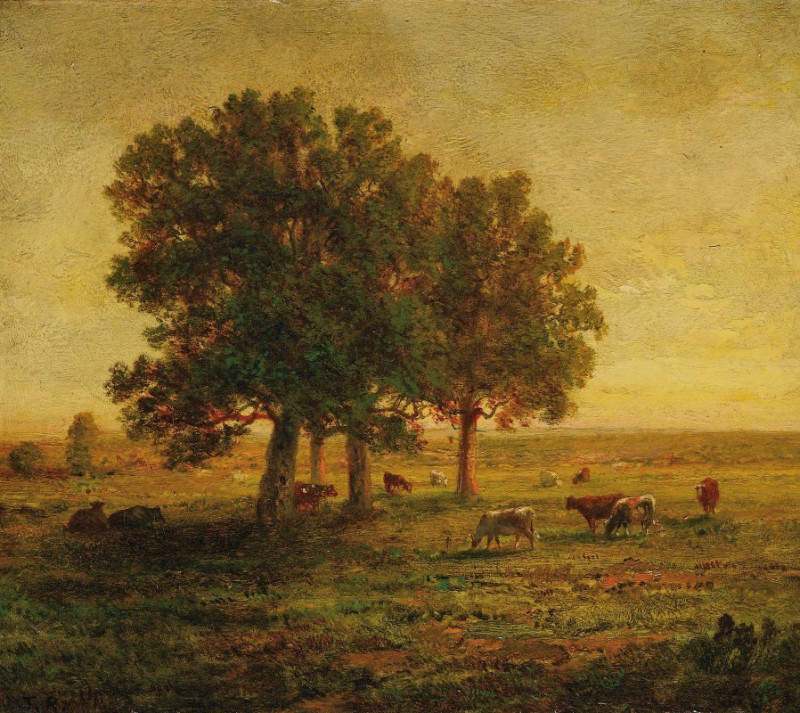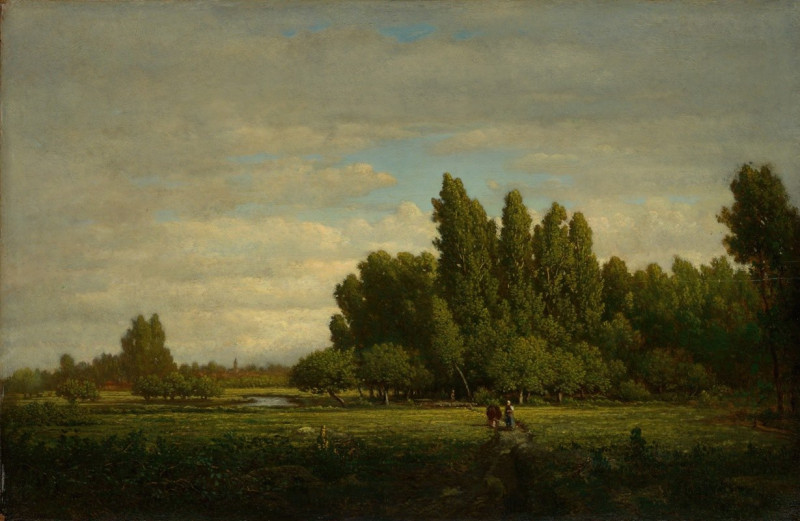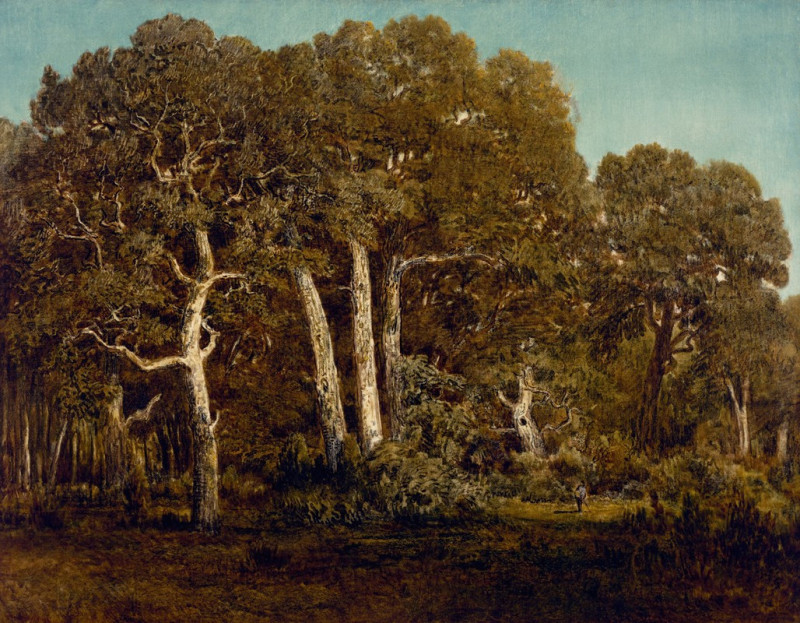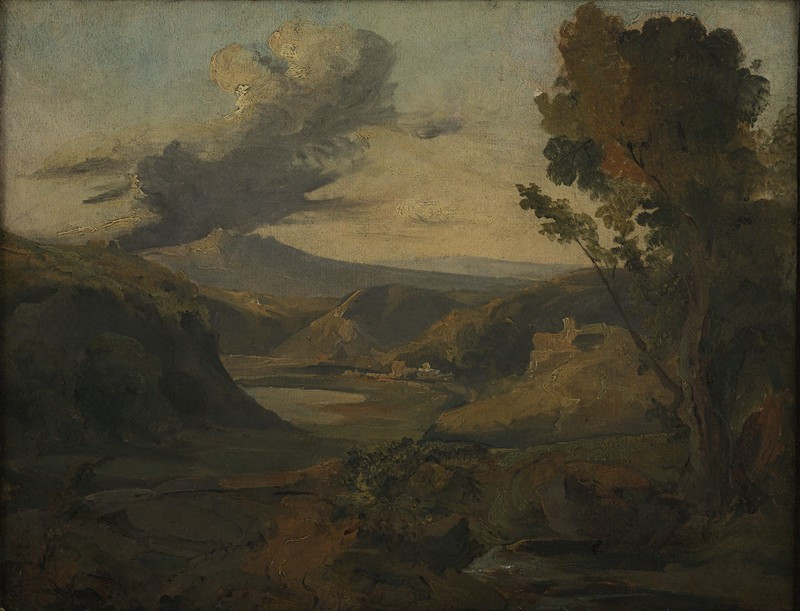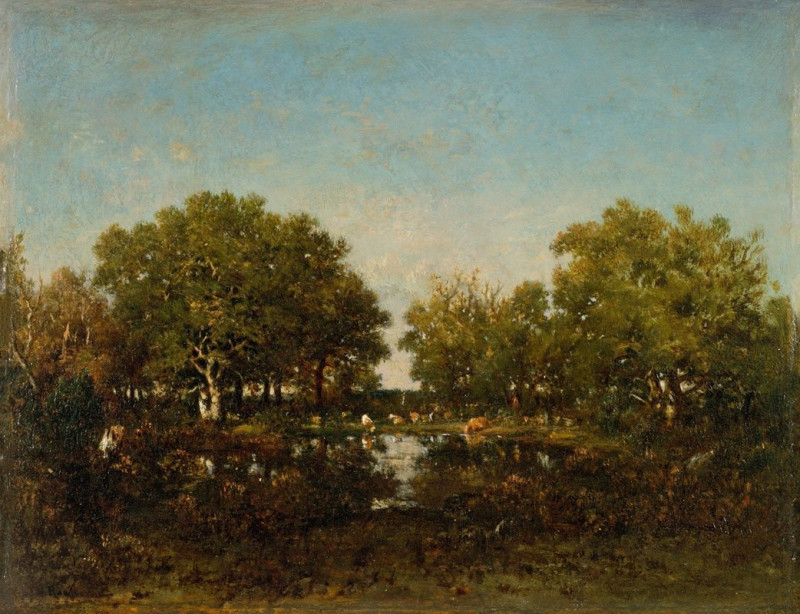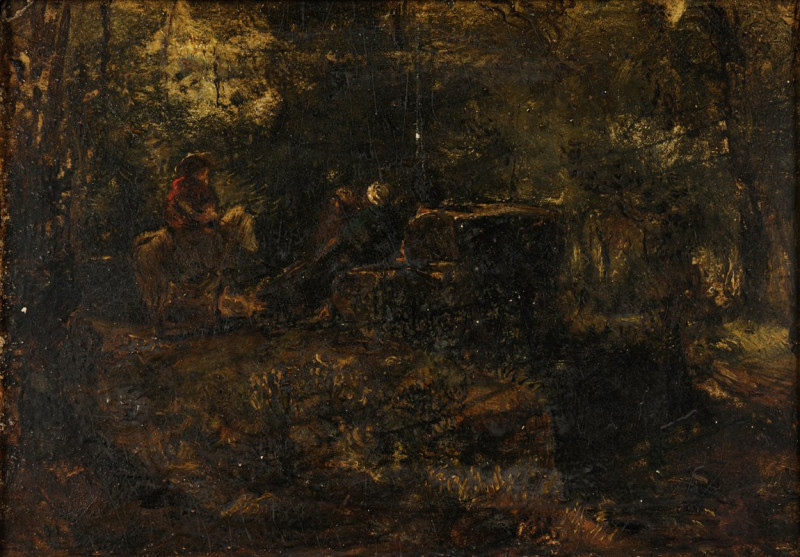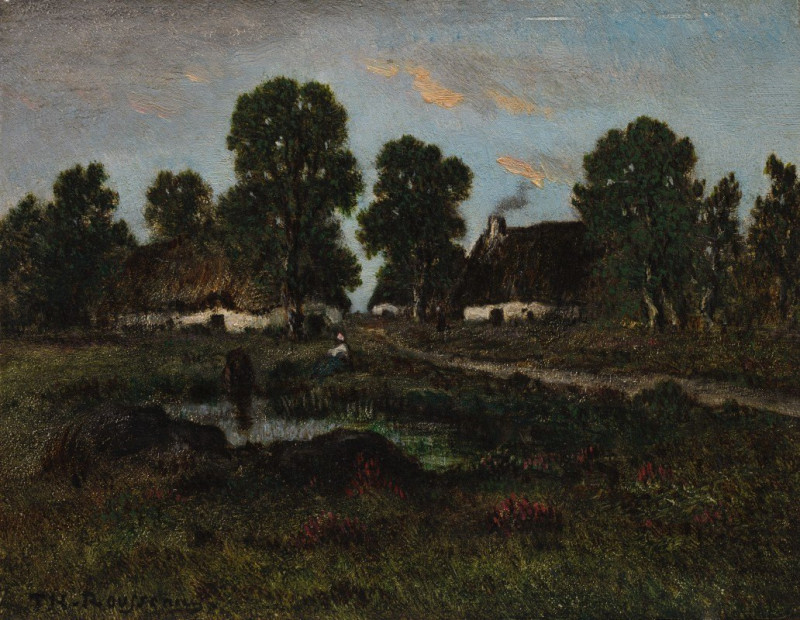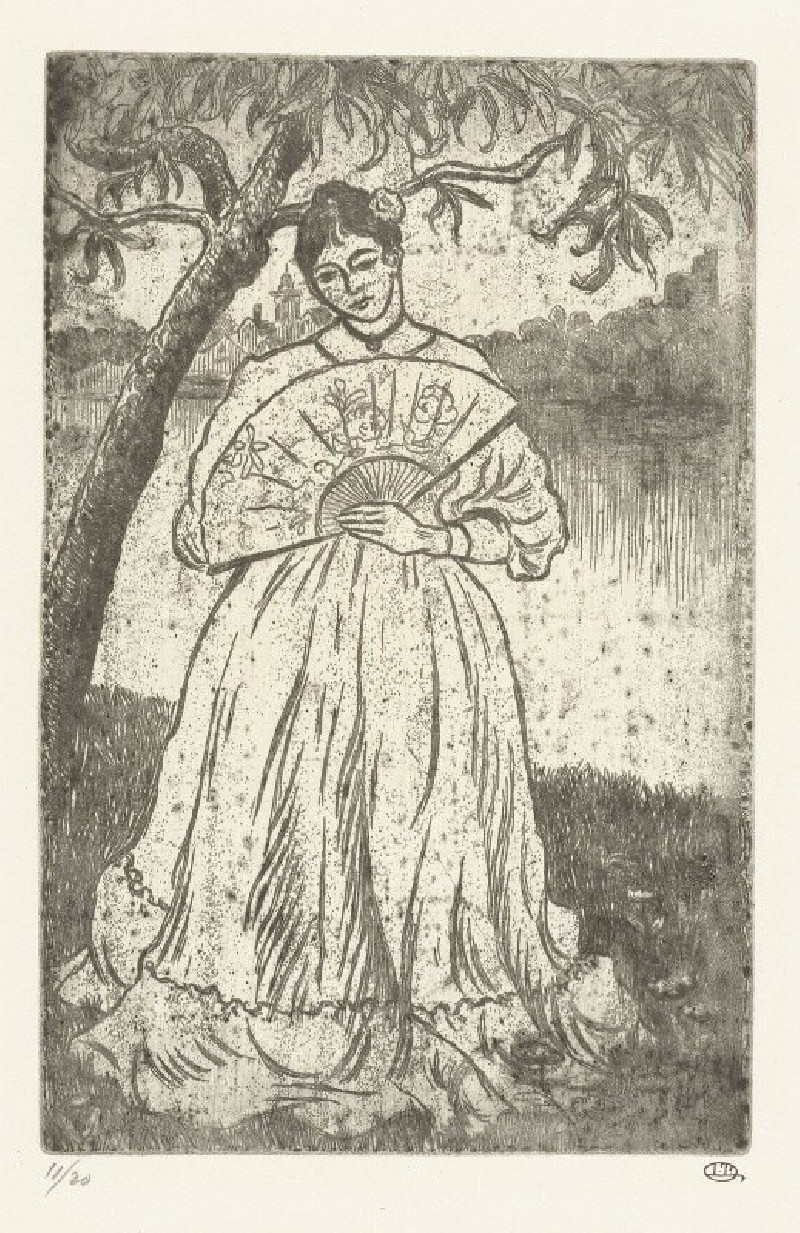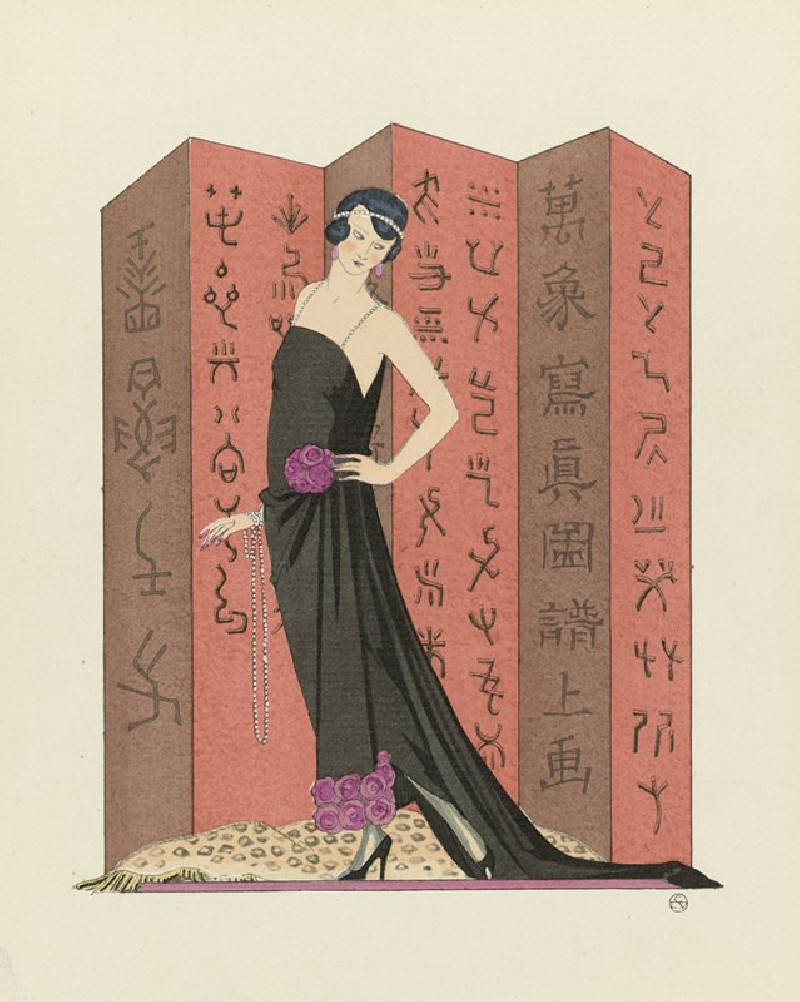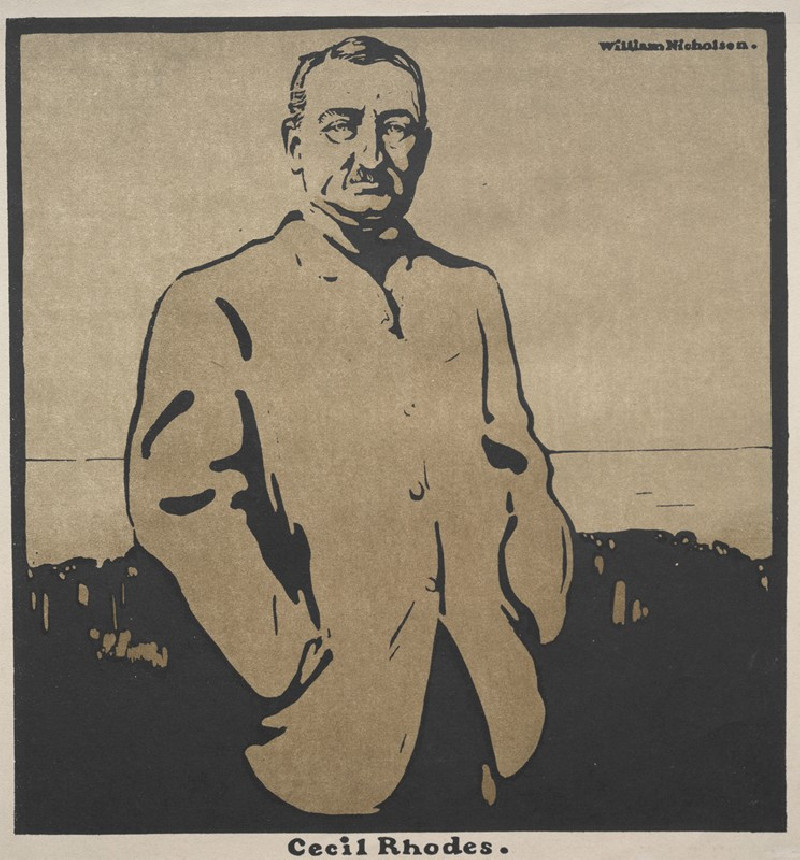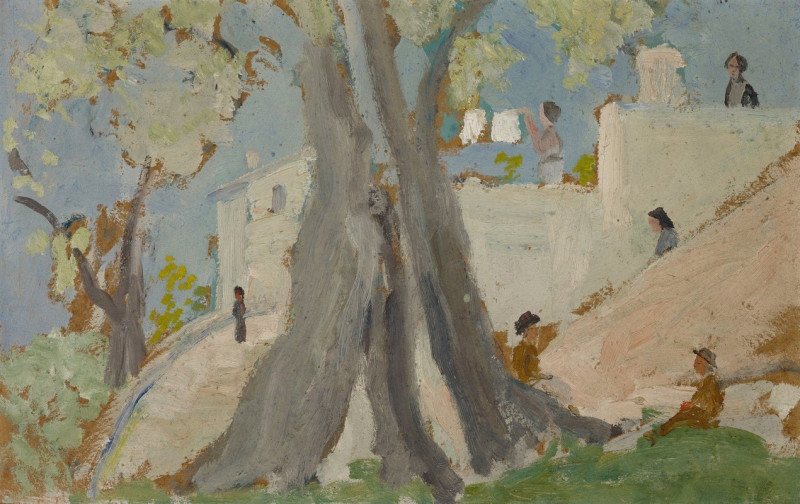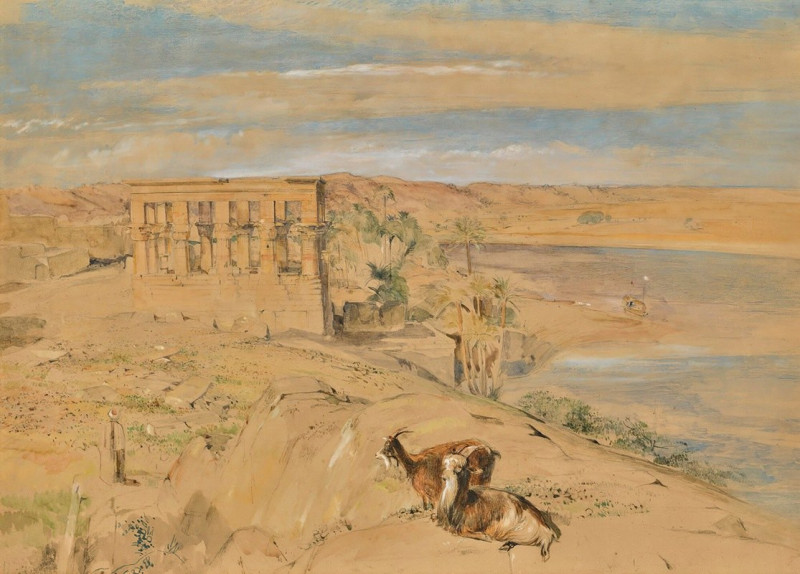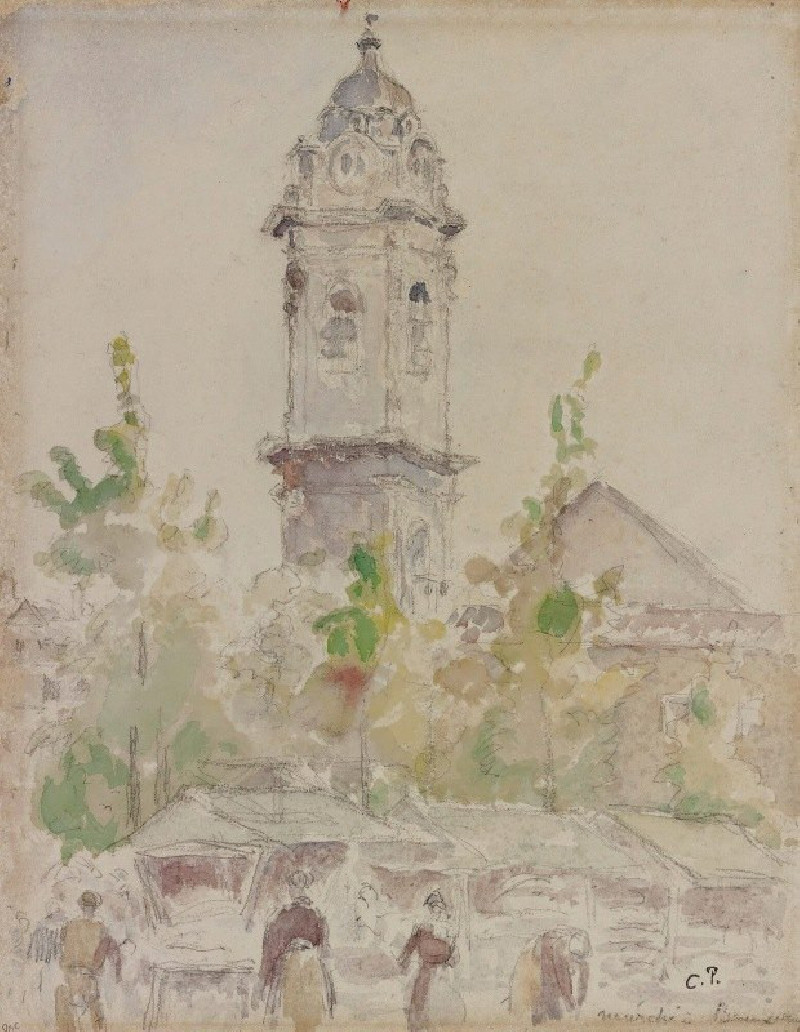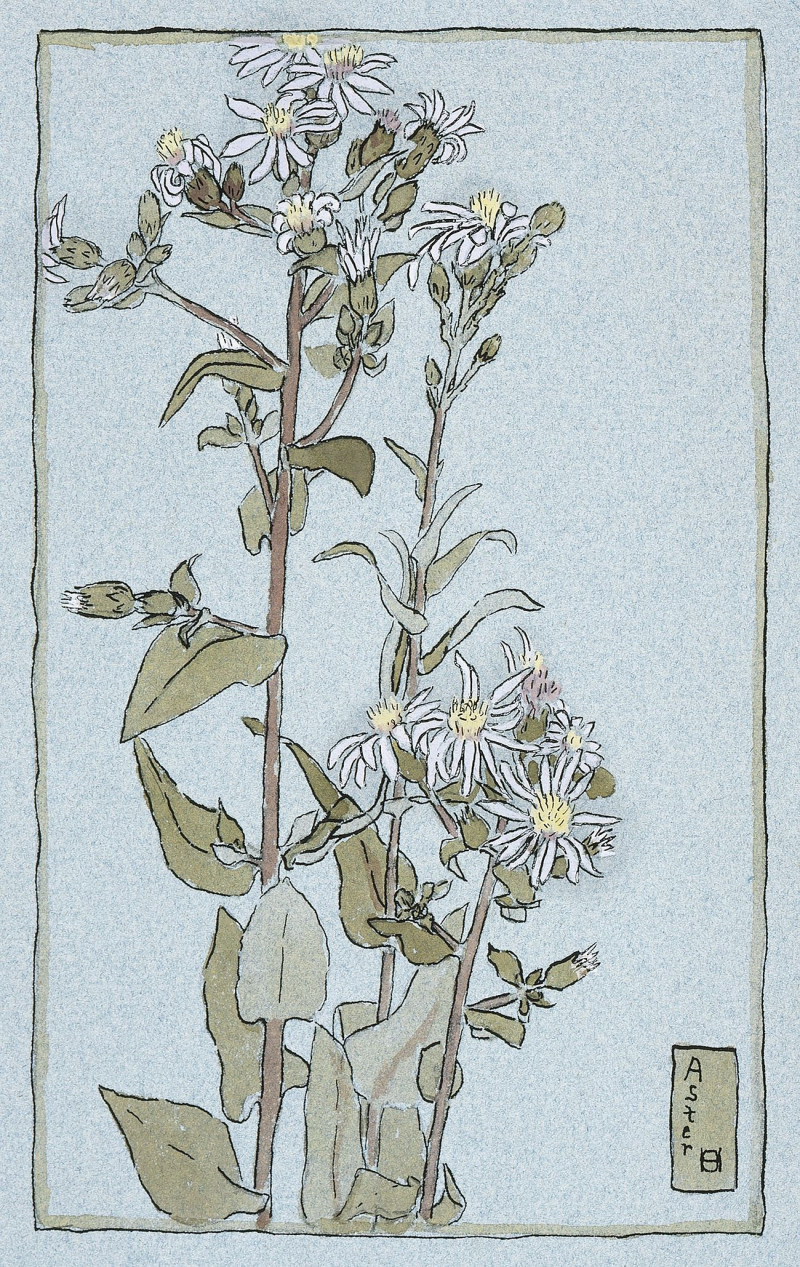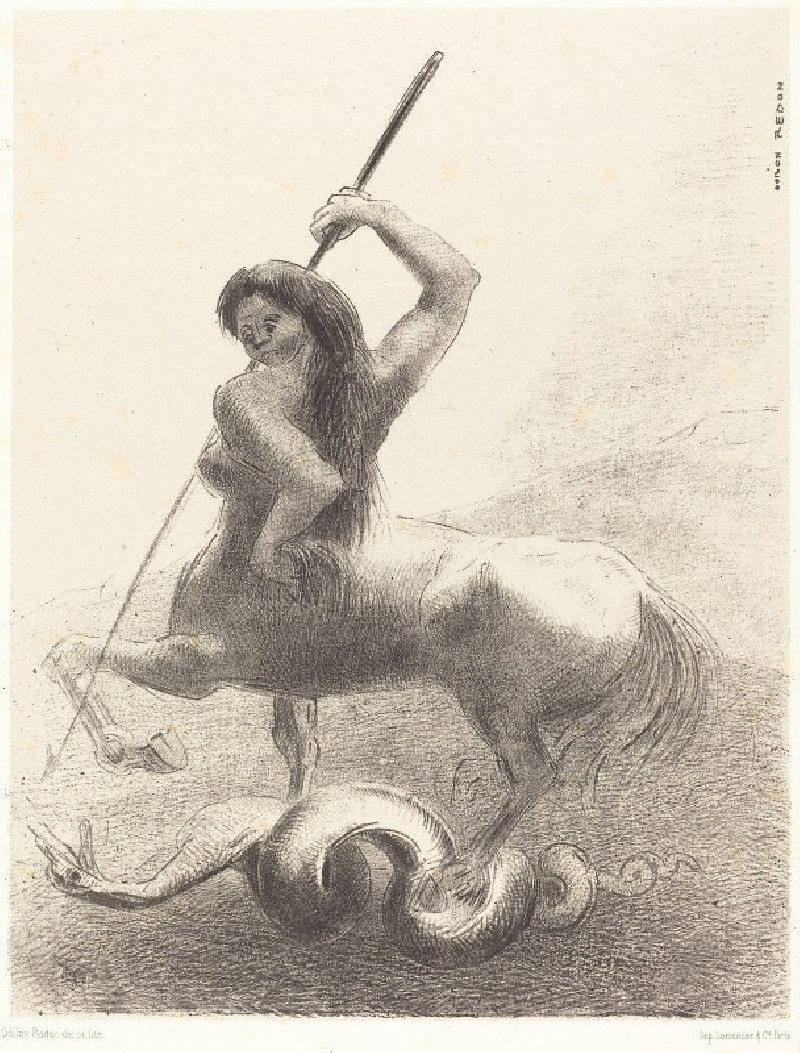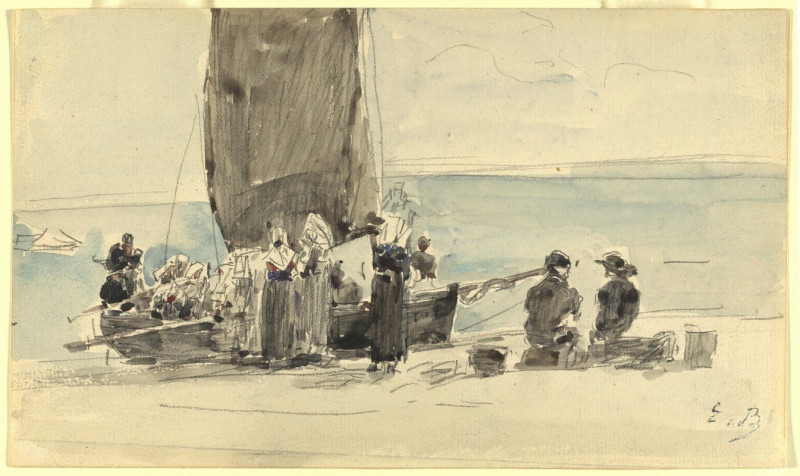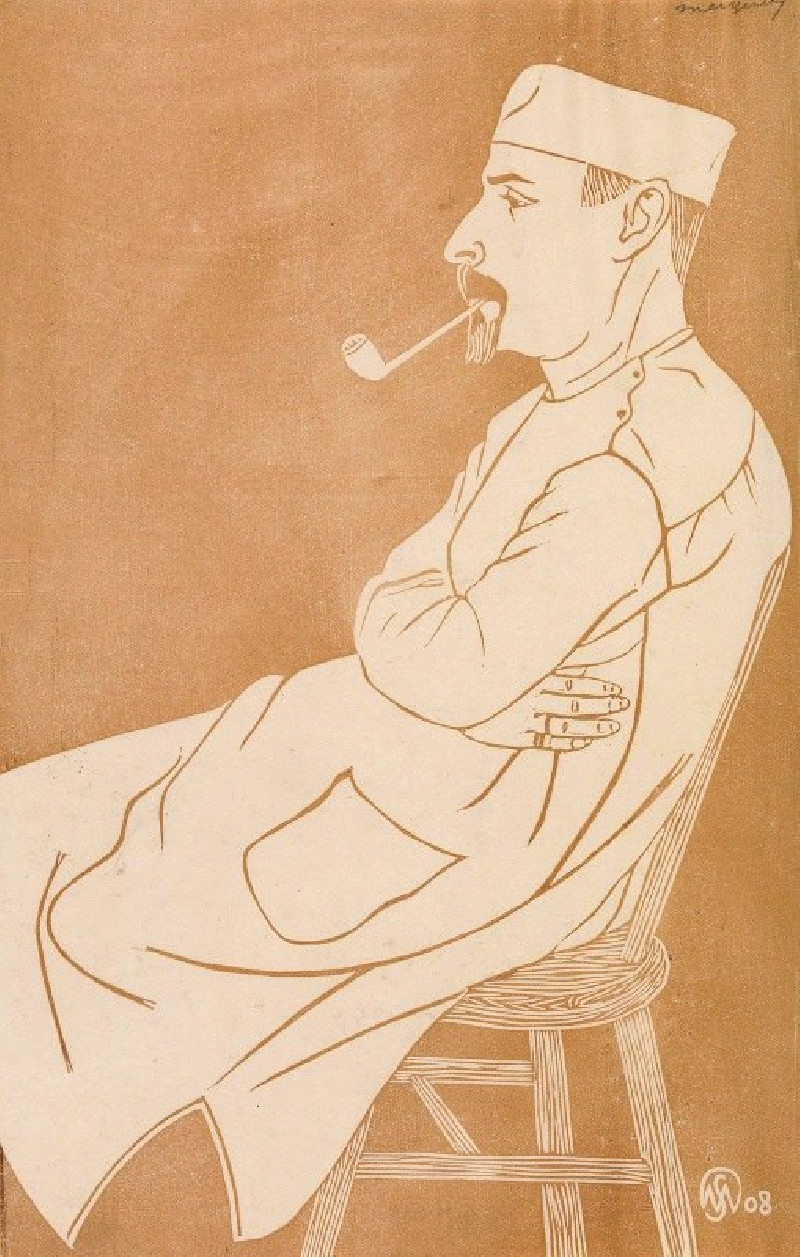View of Mont Blanc, Seen from La Faucille (c. 1865)
Technique: Giclée quality print
Recommended by our customers
More about this artwork
In Théodore Rousseau's tranquil masterpiece "View of Mont Blanc, Seen from La Faucille," dating back to around 1865, the awe-inspiring presence of nature is palpable. This painting invites the viewer into a panoramic view of Mont Blanc, the highest peak in the Alps, beautifully framed by the subtle yet detailed foreground of verdant landscapes.As one's gaze settles on the painting, it is immediately captured by the majestic mountain range in the distance, where Mont Blanc stands gracefully dusted with snow, its grandeur dominating the horizon. The mountain's peaks, shrouded in ethereal light, contrast sharply with the softer tones of the sky and the crisp clarity of the air, suggesting the purity and remoteness of these heights.Moving forward in the landscape, the middle ground is rich with lush greenery and meticulously detailed trees, spread across rolling hills. These areas are interspersed with patches of fields that suggest human touch, cultivation, and a harmonious existence with the natural world. The serene waters lying in the expanse below further add a sense of calm and depth to the scene.Foreground activity includes minute, almost hidden figures of people and pathways that draw the eye, providing a scale to the vastness and adding a layer of narrative about human interaction with nature. These small figures, together with winding roads and a variety of trees, enhance the realism of the scene and invite the viewer to imagine walking through this peaceful terrain, exploring the tranquility that nature offers.Théodore Rousseau's "View of Mont Blanc, Seen from La Faucille" is a testament to the artist's love for nature and his skill in capturing its varied moods and scales.
Delivery
Returns
Étienne Pierre Théodore Rousseau was a French painter of the Barbizon school.
He was born in Paris, France in a bourgeois family. At first he received a basic level of training, but soon displayed aptitude for painting. Although his father regretted the decision at first, he became reconciled to his son forsaking business, and throughout the artist's career (for he survived his son) was a sympathizer with him in all his conflicts with the Paris Salon authorities.

